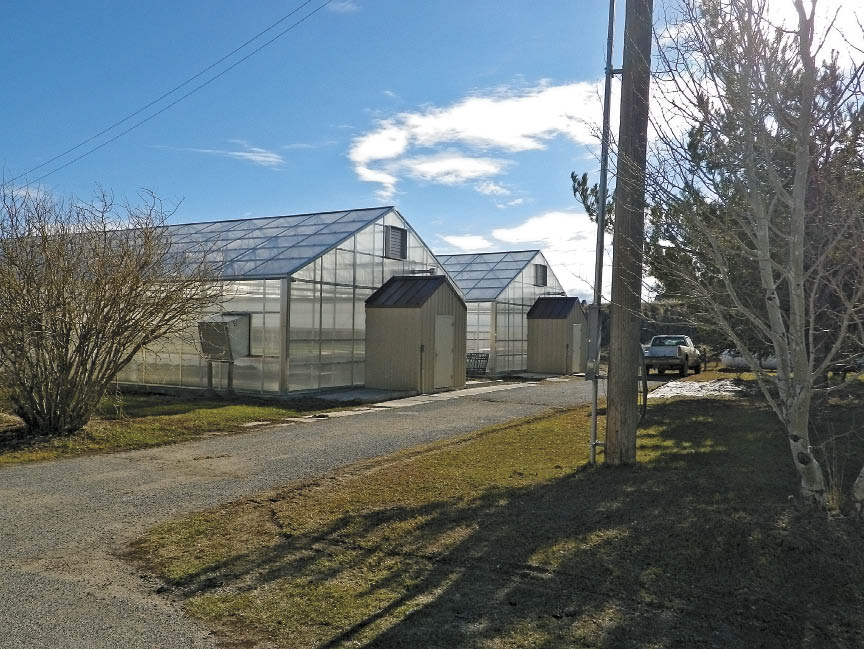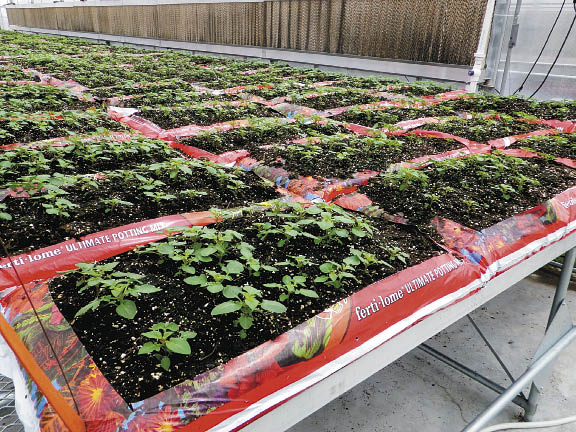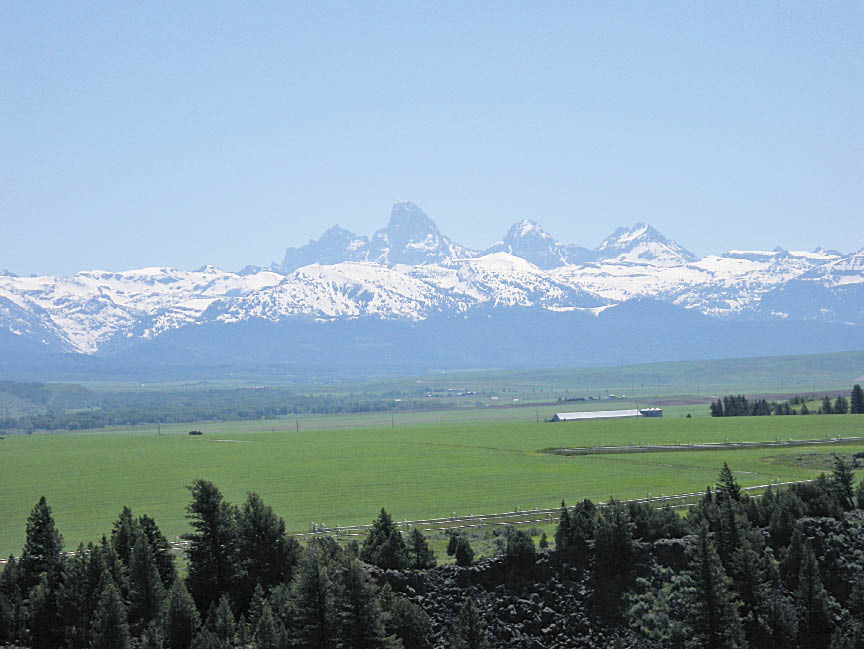 With a view of the majestic Grand Tetons in the background, the University of Idaho Tetonia Research and Extension Center surely enjoys one of the most scenic locations of any University Research Center in the country. Located on the rim of Idaho's Teton basin, the center sits 6,200 feet above sea level. The unique setting and environment makes the center a vital location for the Pacific Northwest's potato breeding programs.
With a view of the majestic Grand Tetons in the background, the University of Idaho Tetonia Research and Extension Center surely enjoys one of the most scenic locations of any University Research Center in the country. Located on the rim of Idaho's Teton basin, the center sits 6,200 feet above sea level. The unique setting and environment makes the center a vital location for the Pacific Northwest's potato breeding programs.
The Tetonia R & E Center was established in 1917, some 95 years ago. The center currently consists of two parts, with 80 acres of irrigated farm ground and another 10 acres of buildings and roadways on the southern portion and an additional 458 acres on the northern portion for a total of around 580 acres.
 There are three greenhouses on the premises: two larger ones that are used by the center and another smaller one totally dedicated to the Aberdeen Potato Breeding and Variety Development Program. Utilizing one-time UI CALS funding last year, the center recently benefitted from an extensive renovation project that included the replacement of all windows and doors with modern, more efficient units as well as the application of new siding on all of the buildings. The renovation gives the center a new unified look and should allow more efficient operations well into the future.
There are three greenhouses on the premises: two larger ones that are used by the center and another smaller one totally dedicated to the Aberdeen Potato Breeding and Variety Development Program. Utilizing one-time UI CALS funding last year, the center recently benefitted from an extensive renovation project that included the replacement of all windows and doors with modern, more efficient units as well as the application of new siding on all of the buildings. The renovation gives the center a new unified look and should allow more efficient operations well into the future.
The unique location is characterized by a short growing season, and the high elevation provides isolation from insects and diseases for both potato seed and small grains seed production. Tetonia produces 100 percent of the seed potatoes (mini-tubers) in the University Foundation seed program and 79 percent of the foundation cereal seed. In fact, it is the primary breeding site for all cereal varietal development.
The importance of the center to Pacific Northwest potato breeding projects cannot be overemphasized. Tetonia is the primary seed site for breeding selections from the Aberdeen program, which is under the direction of Dr. Rich Novy and Dr. Jonathan Whitworth.
The short growing season makes the center an excellent site for the selection of early-maturing russets for both the fresh and the processing markets. Teton Russet, an early- maturing russet suitable for fresh pack and processing was originally selected in the field at the center and was released as a variety in 2011. The isolation also makes the center important for production of pre-nuclear and nuclear seed stocks of promising advanced breeding clones and newly released varieties from the Tri-State breeding program.
 The short summer months are intensely packed with potato breeding activities with 3,000-5,000 single hill (first field generation) breeding clones evaluated and selected for their potential as early maturing potato varieties. Seed of selected single hills is then evaluated for a second field year again at Tetonia as well as at Aberdeen, Idaho.
The short summer months are intensely packed with potato breeding activities with 3,000-5,000 single hill (first field generation) breeding clones evaluated and selected for their potential as early maturing potato varieties. Seed of selected single hills is then evaluated for a second field year again at Tetonia as well as at Aberdeen, Idaho.
All seed of breeding clones selected at Tetonia and at Aberdeen for advanced yield trials comes from the center, with 125 to 200 advanced breeding clones maintained for seed increase each year. In addition, all of the breeding entries from Aberdeen that are evaluated in the Tri-State and Western regional potato trials originated from seed produced at Tetonia.
Annually, the total number of breeding clones at Tetonia from first field generation to seed maintenance of advanced breeding clones averages about 4,300 breeding clones. Breeding clones advancing through the Aberdeen potato breeding program are established at Tetonia to allow for the production of seed in a state-recognized seed management area having low virus pressure.
The increase and maintenance of these Aberdeen clones is conducted at Tetonia. There is no seed increase of promising Aberdeen germplasm by Tri-State collaborators outside of Idaho prior to entry in the Tri-State trial. Tetonia also was surveyed by APHIS for the presence of potato cyst nematode (PCN) in 2009 and has been certified as being free of this pest allowing the shipment of seed to cooperators within and outside of Idaho.
The UI produces a large majority of the pre-nuclear mini-tubers that feed into Idaho's potato certification system. The Tetonia R&E Center also produces all of the seed required for storage and production management trials for advanced selections from the breeding program and, therefore, is essential for the development of fertilizer, water, spacing and storage recommendations for newly released varieties.
The Tetonia research station has the necessary field equipment, greenhouse and storage facilities, and field space needed for the production of breeder's seed and pre-nuclear/nuclear seed generations necessary for supplying new varieties to seed growers. Staff at the facility also provides much-needed aid during spring seed cutting, planting and harvest of breeding plots. Plots during the growing season also are maintained by center staff with fertilizer, water and pesticide applications overseen by them.
The work performed at the Tetonia R&E Center is clearly essential for the production of new potato varieties in Idaho, as well as small grain varieties. Without the Tetonia Center, the joint ARS-UI potato breeding program at Aberdeen would be severely compromised, as there is no alternative site available to perform these essential functions. This program is a key partner in the regional Northwest Potato Variety Development (Tri-State) program, which has through its breeding and variety development efforts provided the Idaho potato industry with the varieties Ranger Russet, Umatilla Russet and Western Russet accounting for 17 percent of the total planted acreage last year. Recent releases from the Aberdeen program have also garnered interest from the potato industry and hold promise as varieties with the potential for adoption by the industry.